Although it’s the off-season for most national parks, some are at their best in winter, showcasing breathtaking scenery, unforgettable experiences, and unique adventures. Here are the best national parks to visit in winter—some just may surprise you!
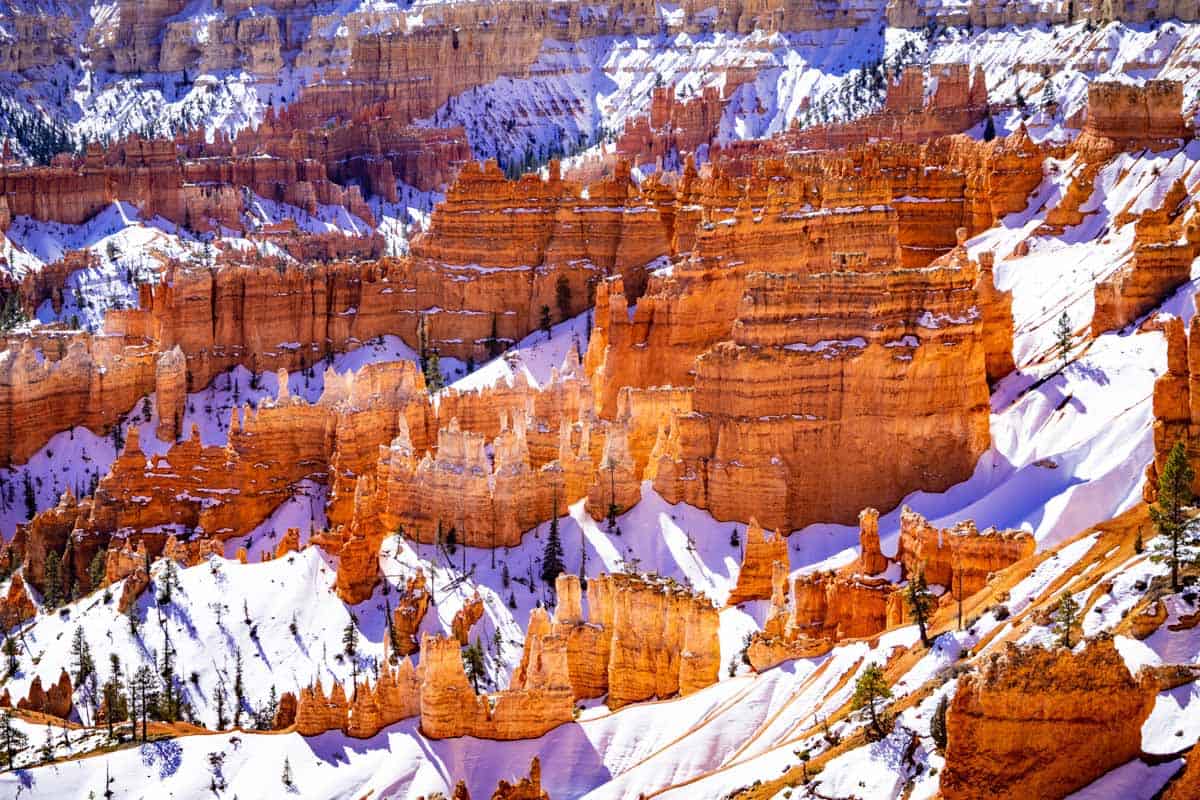
America’s national parks are incredible in every season, but in many, wintertime offers an even more memorable experience. Between snowy, postcard-worthy scenery, elusive wildlife sightings, and unique activities only offered a few months out of the year, winter is a fantastic time to explore national parks.
The icing on the cake is the thinner, sometimes non-existent crowds, as most people visit between May and September. There’s really only one thing that makes a national park adventure better—having it mostly to yourself!
In many cases, it takes more effort to visit national parks in winter. Limited accessibility, inclement weather, and seasonal road closures can all play a role. However, your efforts will absolutely be rewarded!
Whether your heart is set on a North Pole-esque scene or you’re hoping to escape the cold at home, we put together a list of the best national parks to visit in winter, with options for everyone.
America the Beautiful Annual Park Pass

If you’re planning to visit national parks in the winter and summer this year, we’d highly encourage you to look into getting an annual park pass. Most national parks throughout the U.S. have steep entrance fees of $30+ per vehicle.
For just $80 per year, you can purchase the America the Beautiful park pass. This pass grants you free access to all of the national parks. Plus it also covers your entrance to over 2,000 natural, historical, and recreational sites across the United States.
If you still need convincing, check out our article: America the Beautiful Annual Park Pass: Is it Worthwhile?
Want to try out vanlife while visiting the national parks?
If you’ve been following us for a while now, you know we’re obsessed with #vanlife. However, if you don’t have the time (or interest!) in building your own conversion but you still want to give vanlife a test drive, we’ve got options for you…
Check out our list of top companies for USA Campervan Rentals, from budget to bougie, we’ve even included some exclusive discounts for our readers.
One company we’d recommend looking into is Escape Campervans. They have 12 different locations across North America (including Seattle) and come fully loaded with all the gear you need for an epic road trip. Plus, their rates are fair and affordable.
BONUS: We’ve partnered with them to give you a 10% off discount when you use our link!
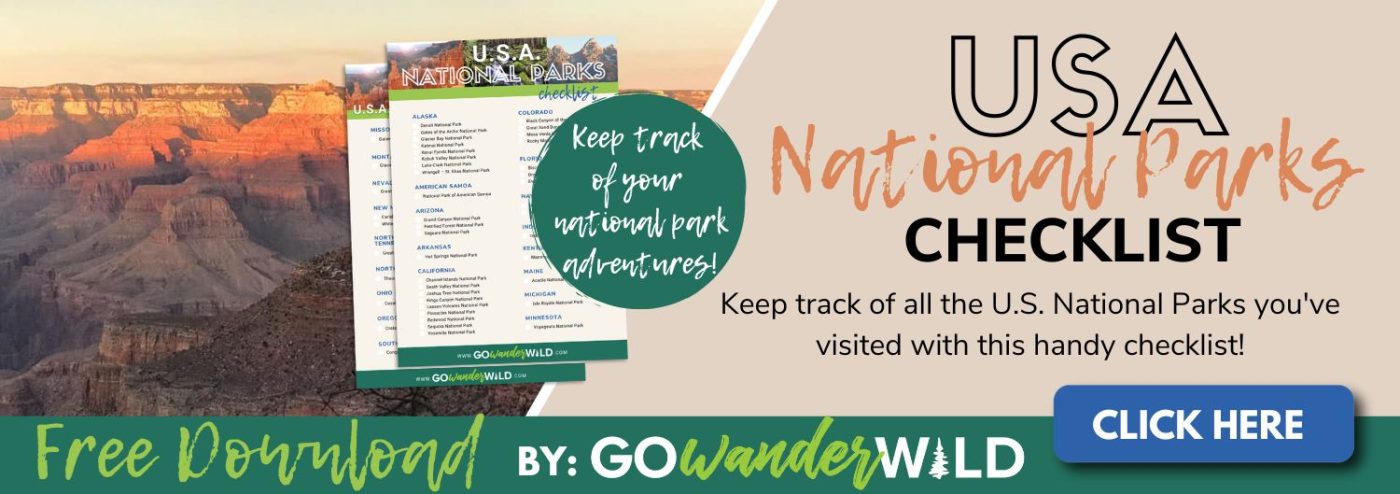

1. Arches National Park

- Location: Eastern Utah
- Open: 24/7, year-round
- Entrance Fee: $30 for private vehicles; $15 on foot or bike; good for seven days
- Why visit in winter?: Much smaller crowds means you can enjoy the rare experience of solitude
Arches National Park has some of the most iconic, picturesque rock formations in the country. You’ll find lots of relatively easy hikes to many of the park’s namesake arches, and the ideal hiking weather lets you complete several.
High temperatures can range between 30-50ºF during the winter and Arches does get some (light) snow, so pack warm clothes and lots of layers.
2. Mount Rainier National Park
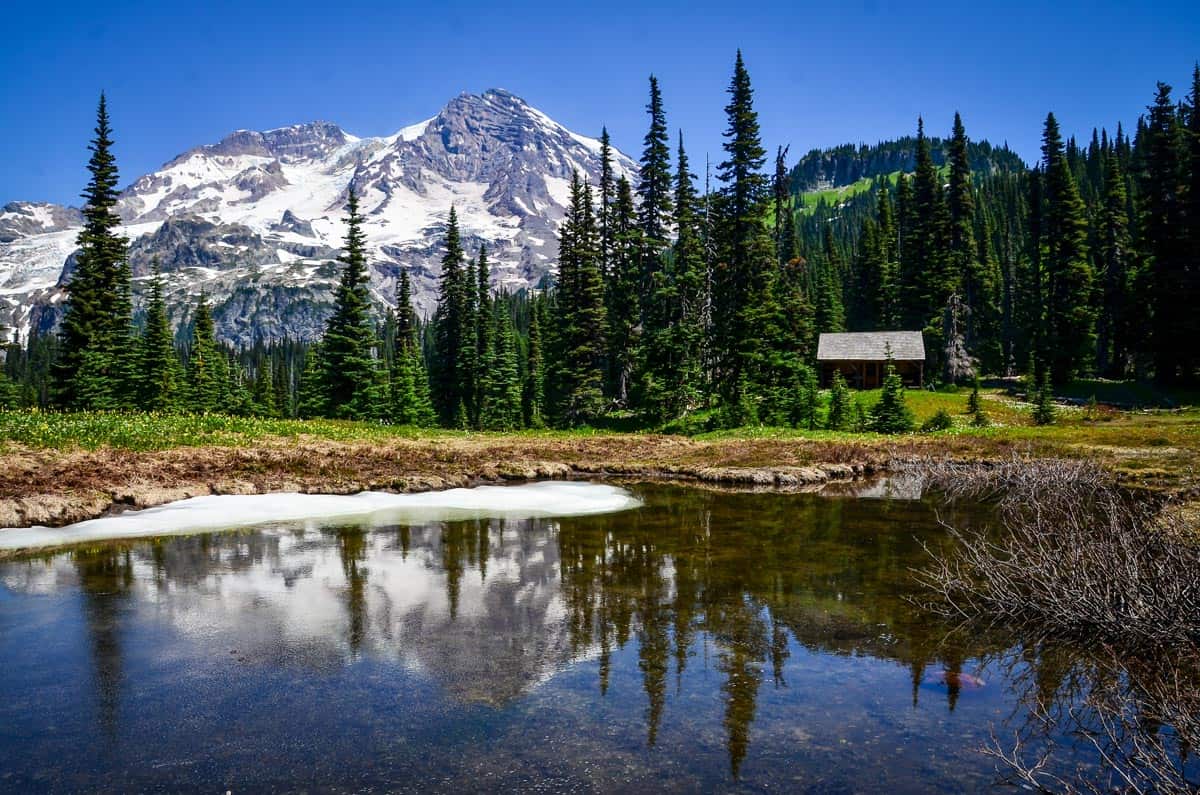
- Location: Western-central Washington
- Open: 24/7, year-round
- Entrance Fee: $30 for private vehicles; $15 on foot or bike; good for seven days
- Why visit in winter?: Snow-covered Mount Rainier creates a breathtaking backdrop for winter sports.
Mount Rainier National Park is named after the tallest volcanic peak in the continental US and is the most visited park in Washington. The namesake volcano looms over visitors snowshoeing, winter camping and hiking, sledding, snowmobiling, skiing, and snowboarding. No wonder this is one of the best national parks to visit in winter!
Some park roads periodically close due to snow, so call the ranger station to check conditions before visiting.
3. Bryce Canyon National Park

- Location: South-central Utah; about 4.5 hours from Arches
- Open: 24/7, year-round
- Entrance Fee: $35 for private vehicles; $20 on foot or bike; good for seven days
- Why visit in winter?: The snow-dusted red rocks are stunning!
One of America’s postcard-worthy winter landscapes is the red rocks of Bryce Canyon with a fresh layer of snow.
For many people, the iconic red rocks represent an oppressively hot desert (we’re looking at you, Sedona and Vegas), so seeing them with fresh powder feels a bit strange at first. Hiking in this scenery is magical, but be sure to bring crampons!
4. Grand Canyon National Park

- Location: Northern Arizona
- Open: South Rim entrance is open 24/7, year-round
- Entrance Fee: $35 for private vehicles; $20 on foot or bike; good for seven days
- Why visit in winter?: Fewer visitors make for a peaceful experience and the Grand Canyon is even more awe-inspiring under light snow
The South Rim is open year-round, home to Grand Canyon Village, popular trailheads including Bright Angel and Kaibab, the park’s scenic drive, and several lodging options.
More than 90% of Grand Canyon’s annual visitors come outside of winter, so the park is all but deserted! You may see some snow, but it can be very hit or miss — however, temps do routinely dip near freezing, so pack plenty of layers!
5. Saguaro National Park
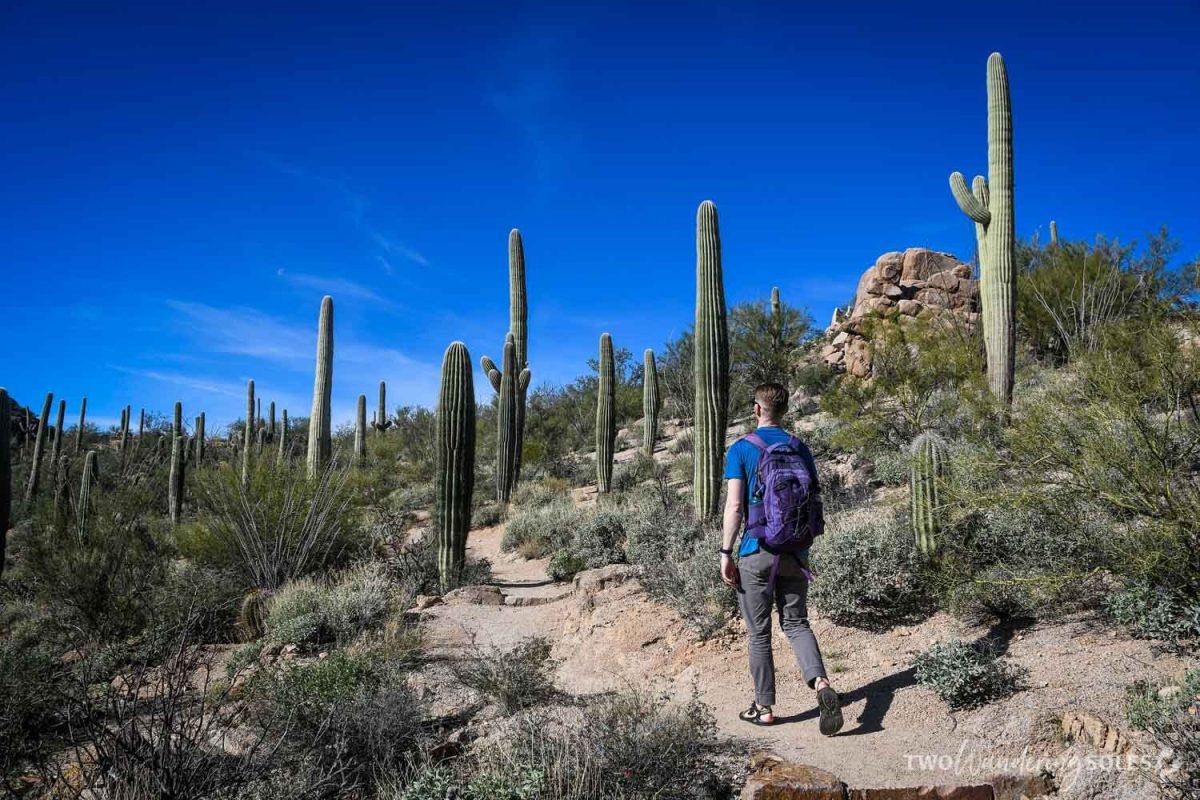
- Location: Southeast Arizona
- Open: Tucson Mountain District (west) – sunrise to sunset; Rincon Mountain District (east) – 5:00 am – 6:00 pm during winter; 24/7 access on foot or bike.
- Entrance Fee: $25 for private vehicles; $15 on foot or bike; good for seven days
- Why visit in winter?: Mild temperatures and clear skies offer a reprieve from Arizona’s brutal desert heat
Located on the outskirts of Tucson, Arizona, Saguaro (East and West) is one of the best national parks to visit in winter. Arizona weather can be unbearable and even dangerous for much of the year, but mild winters are ideal for hiking and exploring.
Opposite of many parks, winter is actually peak season at Saguaro, so expect some crowds.
6. Zion National Park

- Location: Southwest Utah
- Open: 24/7, year-round
- Entrance Fee: $25 for private vehicles; $15 on foot or bike; good for seven days
- Why visit in winter?: Zion gets REALLY crowded and winter is the best time to avoid the crowds
Not only does winter in Zion attract fewer visitors, but it also brings cooler temperatures (50º-60º on average) that make for fantastic hiking.
Aside from epic hikes, you can drive the scenic park road, shop and dine your way through cute Springdale, and try unique experiences like canyoneering. Zion is easily one of the best national parks to visit in winter!
7. Death Valley National Park

- Location: East-central California
- Open: 24/7, year-round
- Entrance Fee: $30 for private vehicles; $15 on foot or bike; good for seven days
- Why visit in winter?: It’s downright dangerous to visit Death Valley in the summer, plus winter offers a vast range of unique landscapes
Death Valley is well-known for recording the hottest temperature on Earth ever at 134º. In 2020, the park had 35 days above 120º, eight above 125º, and even hit 130º once! Luckily, average winter temperatures are typically between 65º-75º, although it sometimes dips into the 30s at night.
In winter, you can truly appreciate all of Death Valley’s unique terrain.
8. Rocky Mountain National Park
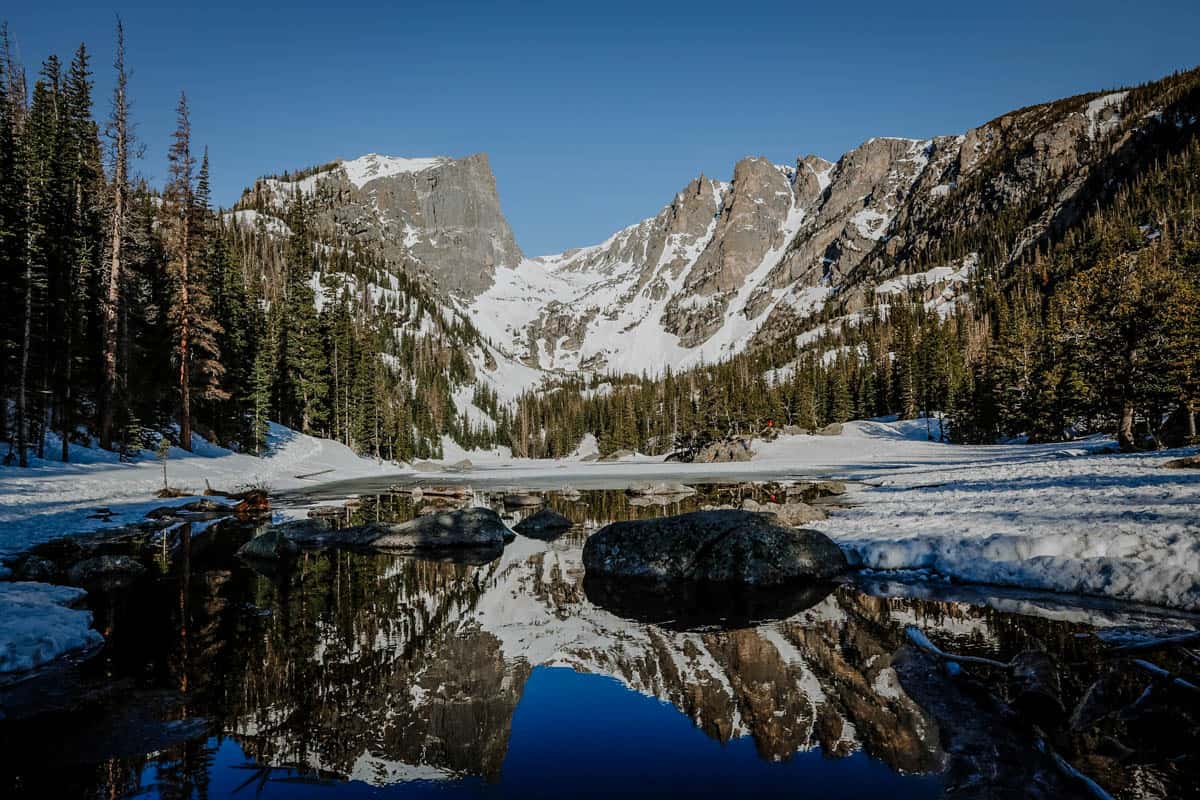
- Location: Northern Colorado
- Open: 24/7, year-round, weather permitting
- Entrance Fee: $30 for private vehicles (1 day); $35 for 7 days; $15 on foot or bike (1 day)
- Why visit in winter?: Snow offers the chance to experience a whole different side of RMNP
Rocky Mountain National Park is amazing year-round, but snow presents the chance to snowshoe, hike, try cross-country skiing, go sledding, and watch wildlife. Note that the park may close temporarily in extreme weather.
The park is only 1.5 hours north of the Mile High, making it a perfect day trip from Denver even if you’re short on time.
9. Everglades National Park
- Location: South Florida
- Open: 24/7, year-round (Miami Entrance only open from 8:30 am to 6:00 pm)
- Entrance Fee: $30 for private vehicles; $15 on foot or bike; good for seven days
- Why visit in winter?: Winter is Florida’s dry season and brings comfortable temperatures with less humidity
Florida summers are hot, muggy, and rainy, but it’s a different story in the winter. Temperatures range from the low 50s to the high 70s and humidity is low. Most importantly, mosquitoes won’t bombard you!
Everglades is one of the best national parks to visit in winter to enjoy hiking and check out the resident wildlife (yep, gators!) on boat tours.
10. Joshua Tree National Park
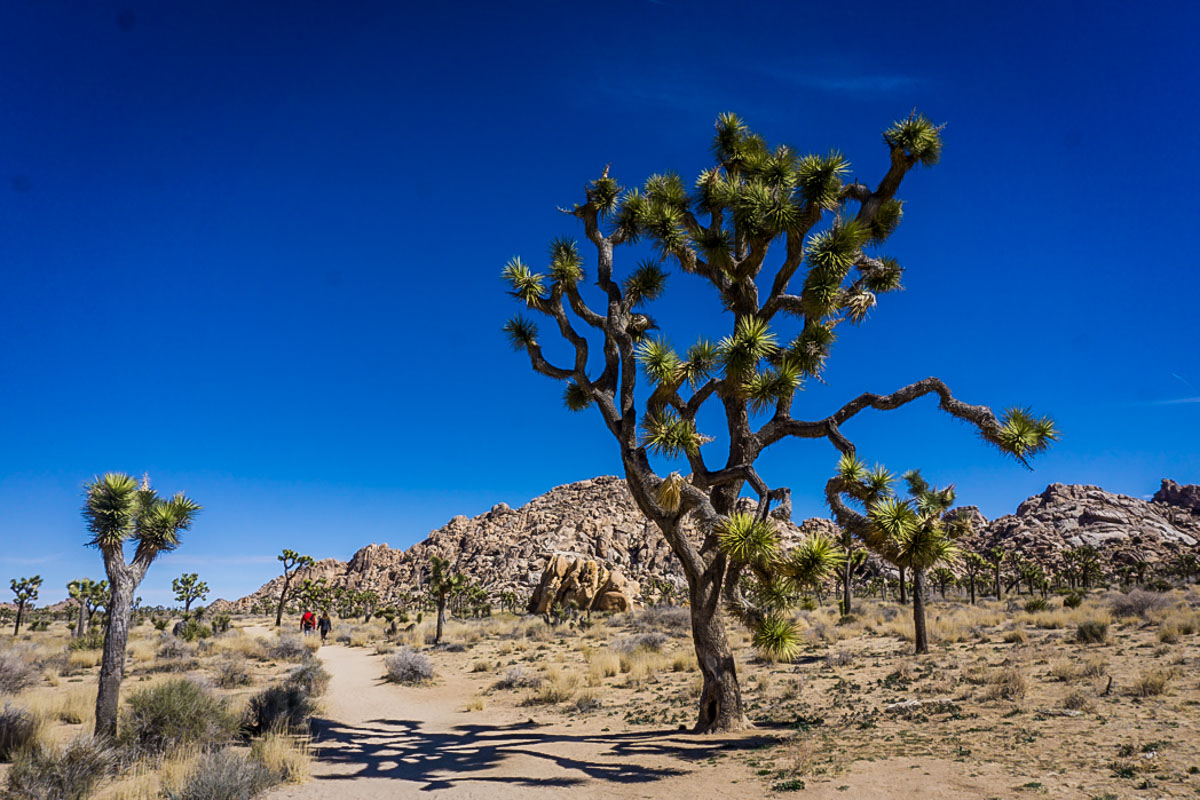
- Location: South-central California
- Open: 24/7, year-round
- Entrance Fee: $30 for private vehicles; $15 on foot or bike; good for seven days
- Why visit in winter?: Winter in Joshua Tree means fewer crowds, less heat, super dark skies for stargazing
Joshua Tree is renowned for its iconic namesake plants, along with unique hikes and stargazing — and major crowds during spring and fall.
Come in the winter to avoid those crowds and take advantage of darker skies and perfect weather. Joshua Tree gets very cold and snow is possible, so pack accordingly…and prepare for epic sunrises and sunsets.
11. Haleakalā National Park

- Location: Maui, Hawaii
- Open: 24/7, year-round
- Entrance Fee: $30 for private vehicles; $15 on foot or bike; good for seven days
- Why visit in winter?: PERFECT hiking weather, plus winter is whale-watching season
It’s Hawaii, what more is there to say? Haleakalā enjoys incredible weather year-round, although the 10,023-foot summit is often freezing!
Enjoy some of the park’s otherworldly hikes and try to catch sunrise from the summit (you need to enter a lottery to get a permit). Outside the park, be sure to book a whale-watching cruise and go snorkeling!
12. Yellowstone National Park
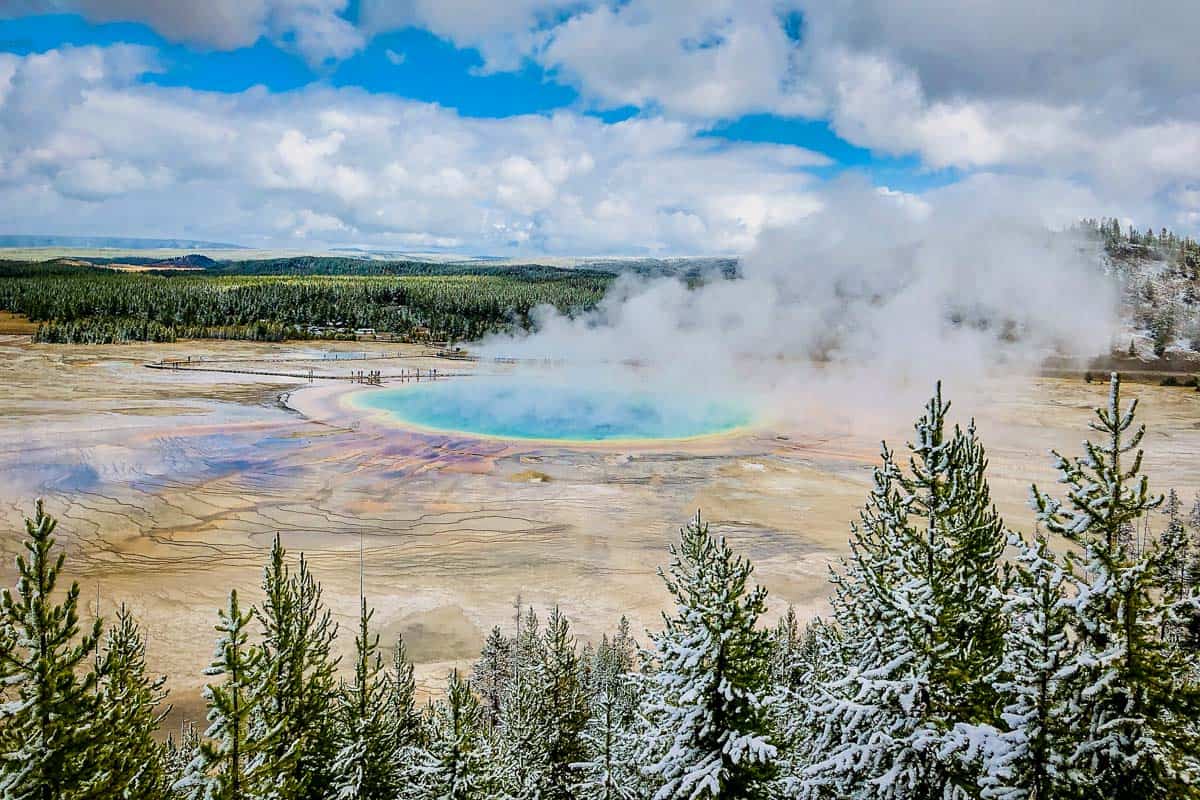
- Location: Northwestern Wyoming/southern Montana
- Open: Gardiner, MT (North Entrance) is open 24/7, year-round; all other entrances close in winter
- Entrance Fee: $35 for private vehicles; $20 on foot or bike; good for seven days
- Why visit in winter?: Seeing steaming geysers surrounded by snow is amazing, and winter is one of the best times for spotting wildlife
Yellowstone needs no introduction, but most people don’t experience it in winter. Most park roads and entrances close to vehicles from November through April.
While many popular hikes are inaccessible, the park opens to snowmobiles, skis, and snowshoes. You can also take an unforgettable Snowcat tour!
13. Grand Teton National Park

- Location: Northwestern Wyoming
- Open: 24/7, year-round
- Entrance Fee: $35 for private vehicles; $20 on foot or bike; good for seven days
- Why visit in winter?: The Tetons are a haven for wildlife in the winter, as fewer crowds bring them out more often
Similar to neighboring Yellowstone, Grand Teton winters are harsh. For visitors willing to brave it, however, the payoff is tremendous, as there’s still so much to do in Grand Teton National Park in the winter.
Hiking in GTNP is just as spectacular with a pair of snowshoes, and cross-country skiing is another popular thing to do. Plus, wildlife is all but guaranteed to be out and about!
14. Biscayne National Park
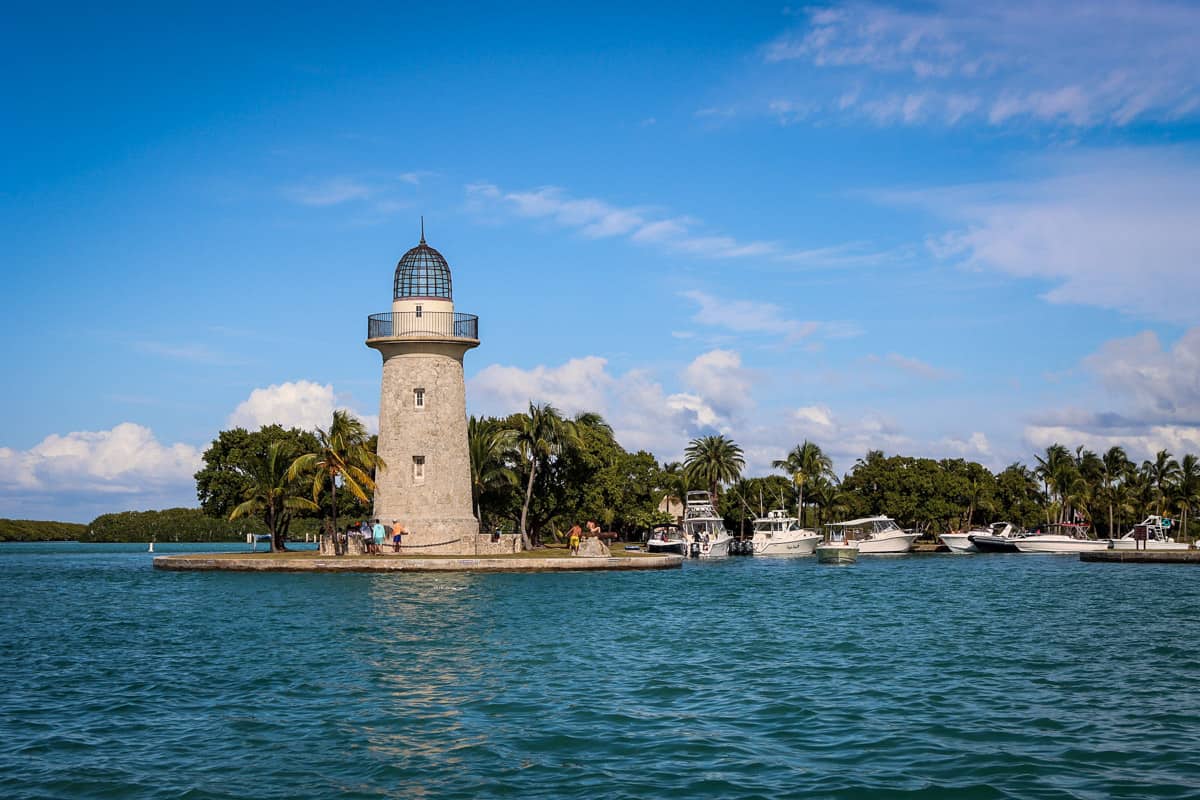
- Location: South Florida
- Open: 24/7, year-round
- Entrance Fee: Free entry; $25 per night to camp (boat required)
- Why visit in winter?: Biscayne’s unique, almost entirely underwater environment is best enjoyed in winter’s mild weather
Biscayne offers visitors a tropical underwater world (it’s 95% underwater!) just outside Miami. Part of the Florida Keys and requiring a boat ride to enjoy, it’s one of the best national parks to visit in winter.
Snorkel and dive among more than 20 artificial reefs and enjoy plenty of beautiful white sand beaches on multiple small islands. There are also a few easy-going hikes, which are much easier to enjoy with fewer crowds and in less humidity!
15. Big Bend National Park

- Location: Southwest Texas
- Open: 24/7, year-round
- Entrance Fee: $30 for private vehicles; $15 on foot or bike; good for seven days
- Why visit in winter?: A winter trip to Big Bend means plenty of solitude and crystal clear skies for stargazing
Big Bend National Park is one of the most remote places in the country, near the US-Mexico border. Even when you factor in peak months, the park sees fewer than 500,000 annual visitors.
The mild winter weather creates the perfect environment for hiking, mountain biking, and visiting the park’s hot springs. It does get extremely cold at night but tends to be warm and sunny during the day, so prepare for varying temperature swings.

You may also like…
- USA National Park Checklist & Guide
- Best National Parks on the West Coast & Western U.S.
- Hiking in Winter: Essential Guide + Tips
- Snowshoeing for Beginners: Everything You Need to Know
Save this article on Pinterest for later!
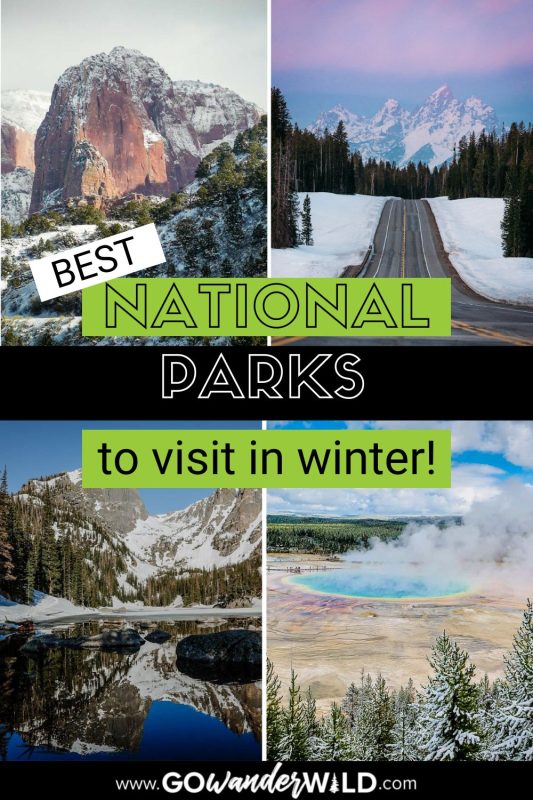
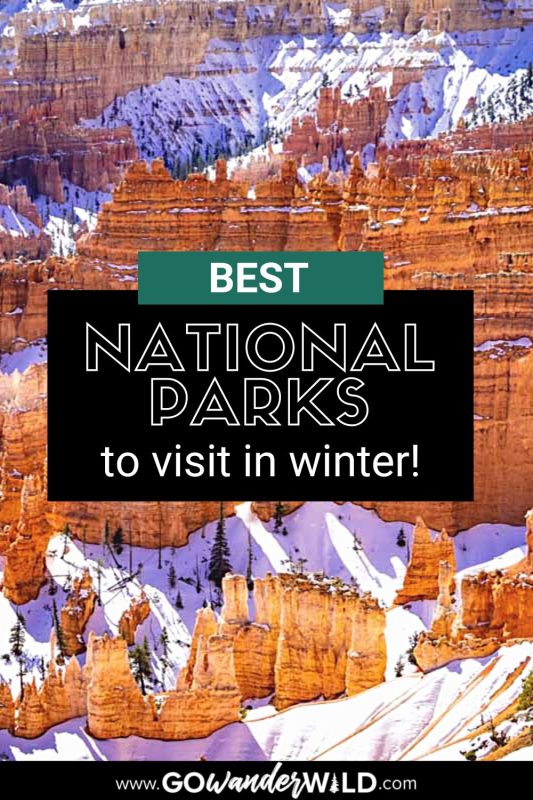
We want to hear from you!
Have you been to any of these national parks during the wintertime? What was your experience like? Do you have any national parks you think should be on the list? Leave your comment below and we’ll do our best to get back to you!

